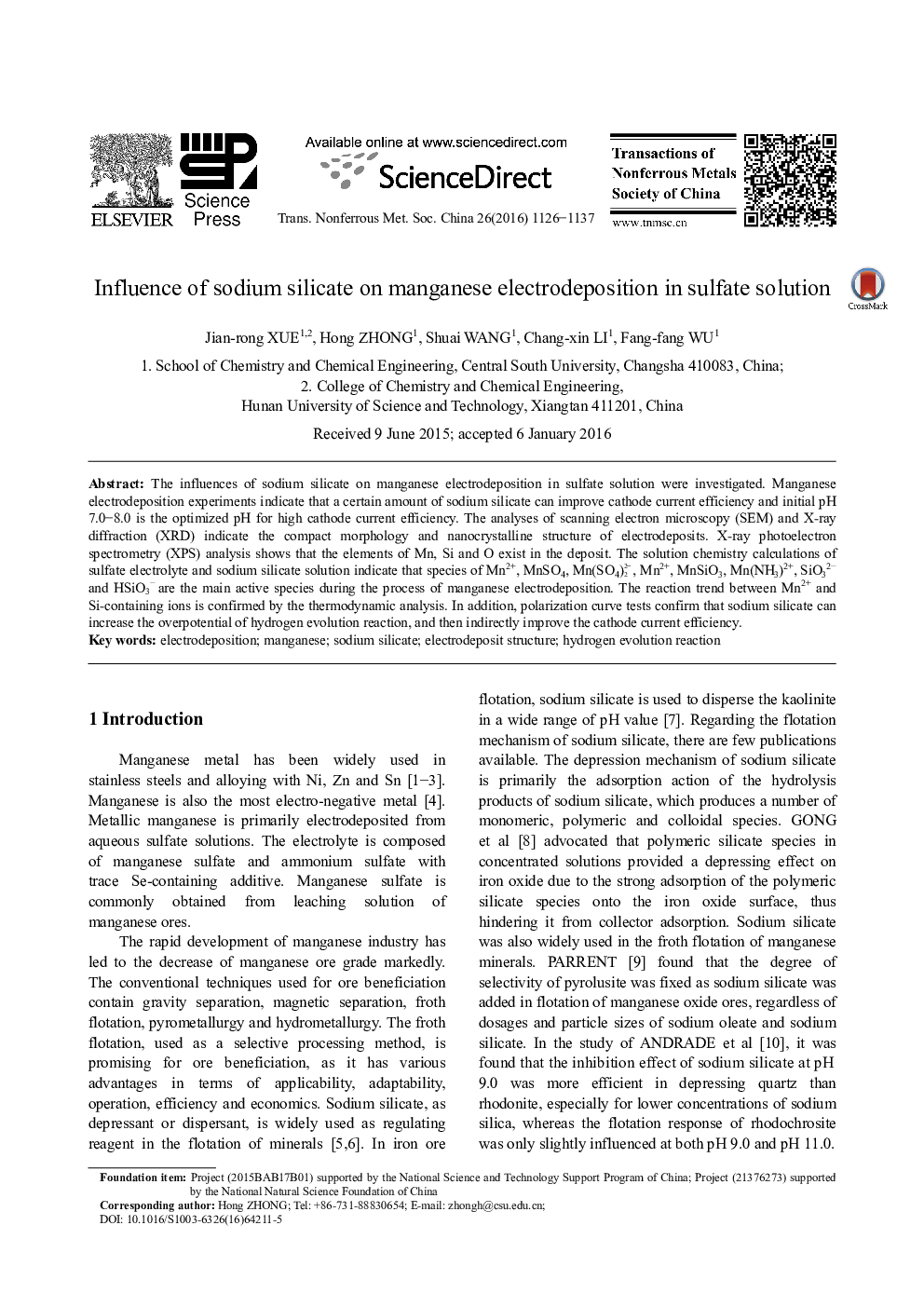| Article ID | Journal | Published Year | Pages | File Type |
|---|---|---|---|---|
| 1635842 | Transactions of Nonferrous Metals Society of China | 2016 | 12 Pages |
The influences of sodium silicate on manganese electrodeposition in sulfate solution were investigated. Manganese electrodeposition experiments indicate that a certain amount of sodium silicate can improve cathode current efficiency and initial pH 7.0–8.0 is the optimized pH for high cathode current efficiency. The analyses of scanning electron microscopy (SEM) and X-ray diffraction (XRD) indicate the compact morphology and nanocrystalline structure of electrodeposits. X-ray photoelectron spectrometry (XPS) analysis shows that the elements of Mn, Si and O exist in the deposit. The solution chemistry calculations of sulfate electrolyte and sodium silicate solution indicate that species of Mn2+, MnSO4, Mn(SO4)2–2, Mn2+, MnSiO3, Mn(NH3)2+, SiO32– and HSiO3− are the main active species during the process of manganese electrodeposition. The reaction trend between Mn2+ and Si-containing ions is confirmed by the thermodynamic analysis. In addition, polarization curve tests confirm that sodium silicate can increase the overpotential of hydrogen evolution reaction, and then indirectly improve the cathode current efficiency.
